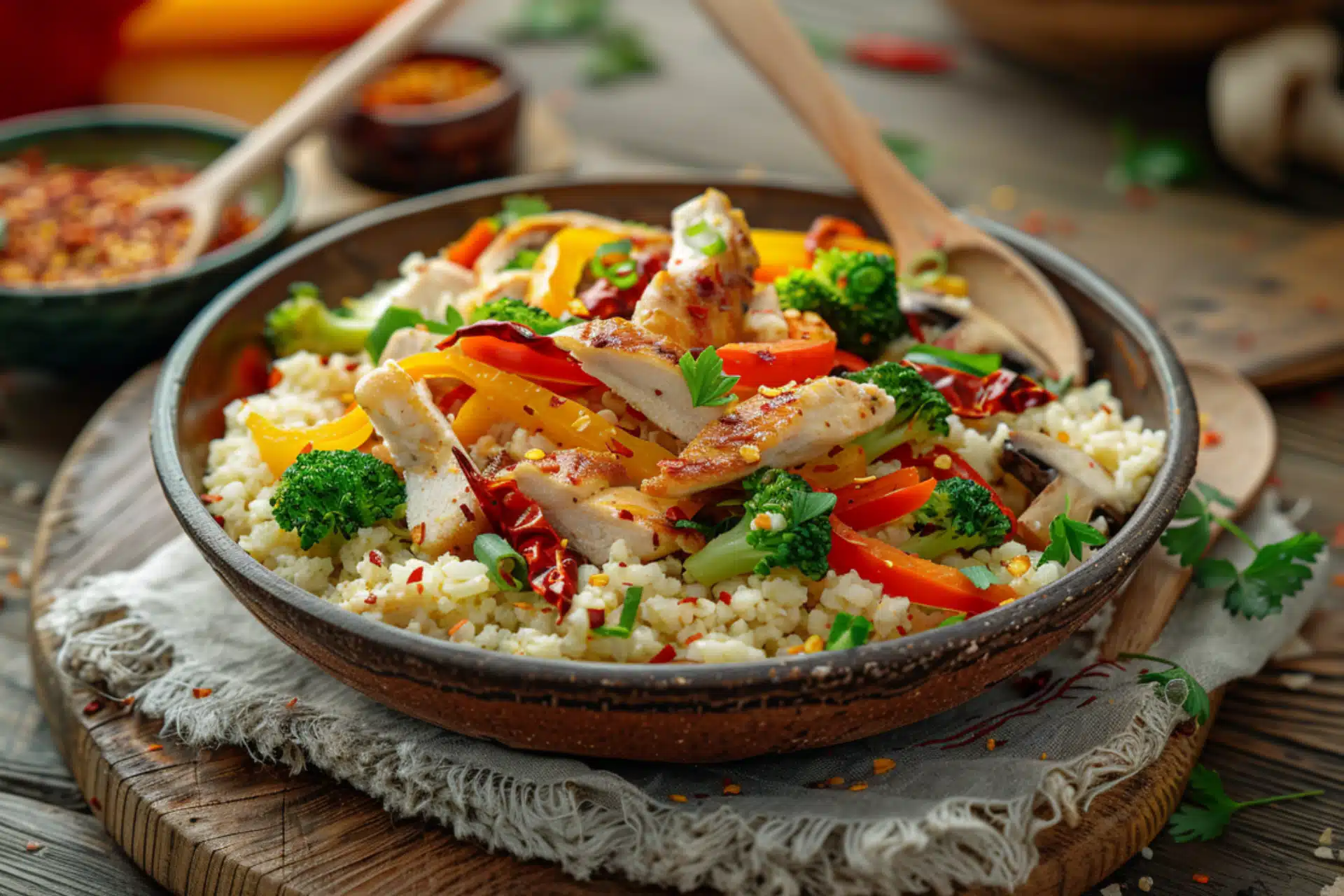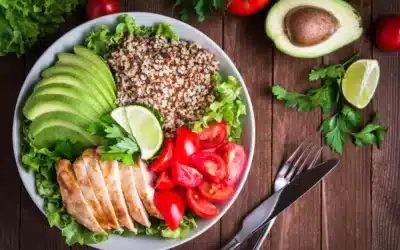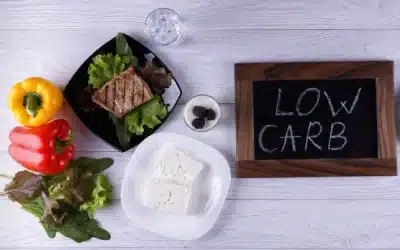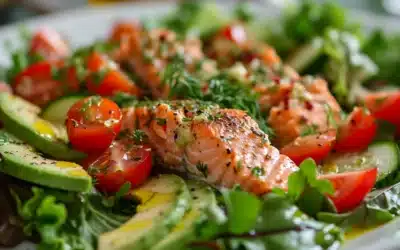In the realm of healthy eating, few dishes are as versatile and satisfying as a well-made stir-fry. It’s a dish that can be endlessly customized to fit any taste or dietary requirement. But for those on a low-carb journey, traditional stir-fry, often heavy on rice, can seem out of reach. Enter cauliflower rice – the game-changer that’s been sweeping the culinary world by storm. This low-carb alternative not only mimics the texture and bite of traditional rice but also brings its own subtle flavors and nutritional benefits to the table. Packed with vitamins, fiber, and antioxidants, cauliflower rice is a powerhouse ingredient that transforms the classic stir-fry into a dish that’s not only satisfying but also incredibly healthy.
The beauty of cauliflower rice lies in its simplicity and versatility. Whether you’re a seasoned chef or a kitchen novice, incorporating cauliflower rice into your meals can open up a world of culinary possibilities. From savory breakfasts to hearty dinners, this ingredient adapts to almost any flavor profile, making it the perfect base for our low-carb cauliflower rice stir-fry recipe. So, if you’re looking to switch up your meal prep game, reduce your carb intake, or simply try something new and delicious, you’re in the right place. In this article, we’ll take you through the process of preparing your own cauliflower rice from scratch, choosing the right ingredients for your stir-fry, and mastering the cooking process. Get ready to impress yourself and your loved ones with a dish that’s as nutritious as it is flavorful.
Introduction to Cauliflower Rice
Cauliflower rice has become a cornerstone of low-carb cooking, offering a nutritious and versatile alternative to traditional grains. Its popularity stems not just from its ability to mimic the texture and mouthfeel of rice but also from its nutritional profile, making it an excellent choice for anyone looking to reduce their carbohydrate intake without sacrificing satisfaction at meal times.
What Is Cauliflower Rice?
Cauliflower rice is simply cauliflower that has been grated or processed into fine, rice-sized pieces. This transformation allows it to take on a role similar to that of rice in dishes, acting as a base or filler that absorbs flavors wonderfully. Yet, unlike rice, cauliflower is low in carbs and high in dietary fiber, vitamins C, K, and B6, and folate, among other nutrients.
Nutritional Benefits
The low carbohydrate content of cauliflower rice makes it ideal for those following ketogenic, paleo, or other low-carb diets. A cup of cauliflower rice contains just a fraction of the calories and carbohydrates of a cup of white rice, making it an excellent option for calorie-conscious individuals. Moreover, its high fiber content can aid in digestion and help maintain a feeling of fullness longer, contributing to weight management and overall health.
Culinary Versatility
One of the most appealing aspects of cauliflower rice is its culinary versatility. It can be used in a myriad of dishes, from stir-fries and salads to bowls and even pizza crusts. Its mild, slightly nutty flavor complements a wide range of ingredients and cuisines, making it a staple in the kitchens of health-conscious cooks and creative chefs alike.
In the next sections, we will guide you through the steps of preparing cauliflower rice from scratch, choosing the best ingredients for your stir-fry, and putting it all together into a delicious, nutritious dish that will become a go-to in your low-carb repertoire.

Preparation of Cauliflower Rice
Creating your own cauliflower rice is a straightforward and rewarding process. With just a head of cauliflower and a few simple kitchen tools, you can prepare a versatile, low-carb base for a variety of dishes. Here’s how to make perfect cauliflower rice every time.
Choosing the Right Cauliflower
Start with a fresh, firm head of cauliflower. The size of the cauliflower doesn’t matter too much, as you can adjust the quantity of rice you make according to your needs. Look for a cauliflower with tightly packed florets and vibrant, green leaves, as these are indicators of freshness.
Tools You Will Need
- A chef’s knife
- A cutting board
- A food processor or box grater
Step-by-Step Guide
- Clean the Cauliflower: Begin by removing the outer leaves and trimming the stem of the cauliflower. Wash it under cold water to remove any dirt.
- Cut into Florets: Using your chef’s knife, cut the cauliflower into smaller florets. This makes it easier to process into rice-sized pieces.
- Grating or Processing: For grating, use a box grater and grate the cauliflower florets against the medium-sized holes. If using a food processor, pulse the florets in batches until they resemble rice. Be careful not to over-process to avoid making it mushy.
- Draining Excess Moisture (Optional): Cauliflower contains a lot of water, which can make your dish soggy. To avoid this, wrap the riced cauliflower in a clean kitchen towel or cheesecloth and squeeze out the excess moisture.
- Cooking or Storing: You can cook the cauliflower rice immediately or store it in the refrigerator for up to a day. If cooking, sautéing in a large skillet over medium heat with a bit of oil or butter for about 5-8 minutes until tender is recommended. Season as desired.
Tips for Perfect Cauliflower Rice
- Don’t Overcrowd the Food Processor: Processing too many florets at once can result in unevenly sized grains. Work in batches for the best texture.
- Season Well: Cauliflower rice benefits greatly from good seasoning. Don’t be shy with spices, herbs, or your favorite sauce.
- Experiment with Cooking Methods: Besides sautéing, you can steam, microwave, or even roast cauliflower rice for different textures and flavors.
Now that you know how to prepare cauliflower rice, the foundation of your low-carb stir-fry is ready. Next, we’ll dive into selecting the perfect ingredients to make your stir-fry not just healthy, but also irresistibly delicious.
Key Ingredients for the Stir-Fry
A successful stir-fry is a symphony of flavors and textures, made from a variety of ingredients that cook quickly and complement each other. For a low-carb cauliflower rice stir-fry, selecting the right ingredients is crucial not only for taste but also for maintaining the health benefits of the dish. Here’s a guide to choosing the best components for your stir-fry.
Proteins
Choose lean proteins to keep your stir-fry both hearty and healthy. Options include:
- Chicken breast, thinly sliced
- Shrimp, peeled and deveined
- Tofu, pressed and cubed (for a vegetarian option)
- Beef, thinly sliced against the grain
Marinate your protein in a mixture of soy sauce, a touch of sesame oil, and your choice of spices for at least 30 minutes before cooking to infuse it with flavor.
Vegetables
The key to a vibrant and tasty stir-fry is a variety of colorful vegetables. They not only add different textures and flavors but also pack the dish with nutrients. Consider these options:
- Bell peppers, sliced thin
- Broccoli florets, blanched
- Carrots, julienned or sliced thin
- Snap peas or green beans
- Mushrooms, sliced
Aim for a mix of colors and textures to make your dish visually appealing and nutritionally balanced.
Aromatics and Flavor Enhancers
Aromatics lay the flavor foundation of your stir-fry. Garlic, ginger, and green onions are essential for creating a depth of flavor. For additional layers of taste, consider incorporating:
- Chili flakes or fresh chilies for heat
- Lemongrass for a citrusy note (especially good with shrimp)
- Fresh basil or cilantro for a burst of freshness
Soy sauce (or tamari for a gluten-free option), fish sauce, and a bit of sweetener (like stevia or monk fruit sweetener for low-carb) help balance the flavors. A splash of rice vinegar can add brightness to the dish.
Healthy Fats
Use oils that can withstand high cooking temperatures without breaking down. Avocado oil, coconut oil, and sesame oil are excellent choices that also contribute to the overall flavor profile of the dish.
Cooking your cauliflower rice stir-fry with these ingredients not only promises a delicious and satisfying meal but also ensures you’re getting a well-rounded nutritional profile. From the lean proteins to the array of vegetables and the flavorful aromatics, every element works together to create a dish that’s as good for you as it is for your taste buds.
In the next section, we’ll go through the step-by-step process of bringing these ingredients together into a stunning cauliflower rice stir-fry.
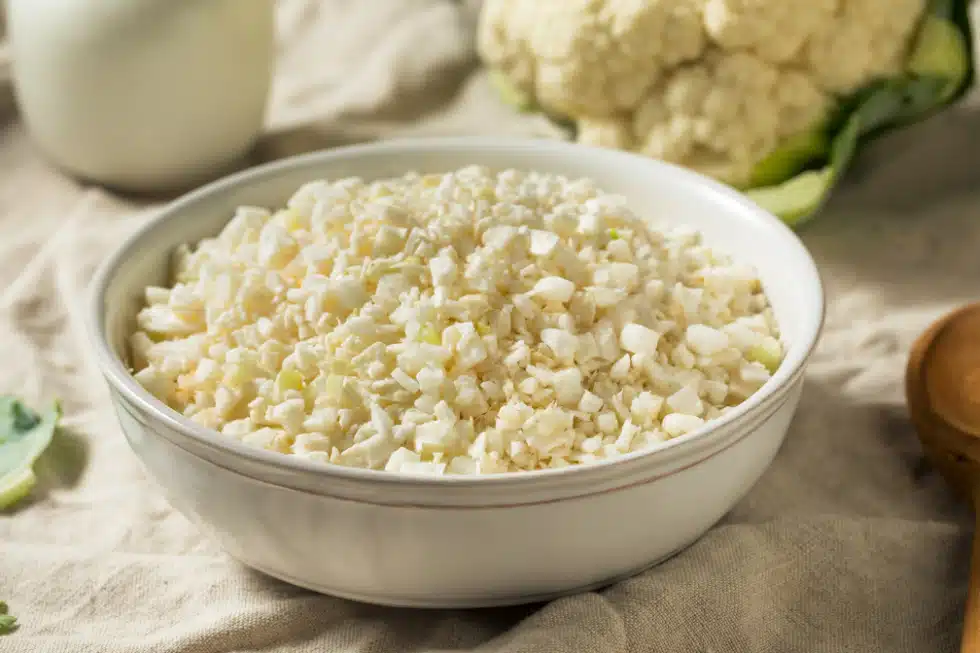
Step-by-Step Cooking Process
Creating a mouthwatering cauliflower rice stir-fry involves more than just throwing ingredients into a pan. The sequence in which you cook your ingredients plays a crucial role in the development of flavors and textures. Follow this step-by-step guide to ensure your stir-fry turns out perfectly every time.
1. Prepare Your Ingredients
Before you begin cooking, make sure all your ingredients are prepped. This includes marinating your protein, ricing your cauliflower, and slicing your vegetables and aromatics. Having everything ready to go makes the cooking process smooth and quick, preventing any overcooking.
2. Cook the Protein
Heat a tablespoon of oil in a large skillet or wok over medium-high heat. Add your marinated protein and cook until it’s browned and cooked through. Remove it from the pan and set it aside. This ensures your protein is perfectly cooked and retains a nice texture.
3. Sauté the Aromatics
In the same pan, add a bit more oil if needed and sauté your garlic, ginger, and any other aromatics you’re using until they’re fragrant. This step is crucial for building the foundational flavors of your stir-fry.
4. Add the Vegetables
Increase the heat to high and add your harder vegetables first (like carrots and broccoli), stirring frequently. After a few minutes, add the softer vegetables (like bell peppers and mushrooms). The goal is to cook them quickly so they retain their crunch and color.
5. Incorporate the Cauliflower Rice
Make space in the center of the pan by pushing the vegetables to the sides. Add the cauliflower rice, letting it sit for a minute to get a bit of color before mixing it with the vegetables. Stir frequently for about 5 to 7 minutes, or until the cauliflower rice is tender.
6. Combine with Protein and Final Touches
Return the cooked protein to the pan, mixing it thoroughly with the cauliflower rice and vegetables. Add your soy sauce, vinegar, and any other sauce or seasoning you’re using. Adjust the heat to ensure everything is warmed through without overcooking.
7. Garnish and Serve
Turn off the heat and add any fresh herbs or additional garnishes like sesame seeds or green onions. Give it one final stir to combine everything.
Serve your cauliflower rice stir-fry hot, with optional sides like sliced avocado or a sprinkle of chopped nuts for extra texture and flavor. This dish is a testament to the fact that low-carb eating can be both delicious and satisfying, filled with textures and flavors that will keep you coming back for more.
With these steps, you’re well on your way to mastering the art of the cauliflower rice stir-fry, a dish that’s as nutritious as it is flavorful.
The Low Carb Diet is a nutritional strategy that emphasizes reducing the intake of carbohydrates. This dietary approach is known for its potential to help control blood sugar levels, support weight loss, and improve overall metabolic health. By limiting carbs and focusing on foods like lean proteins, vegetables, and healthy fats, individuals may experience better appetite control and more stable energy levels.
Serving Suggestions and Variations
Now that you’ve mastered the basic cauliflower rice stir-fry, it’s time to explore ways to serve it and variations you can try to keep your meals exciting and varied. Here are some ideas to inspire your next culinary creation.
Serving Suggestions
Bowl Style: Serve your cauliflower rice stir-fry in a bowl with a side of sliced avocado for a dose of healthy fats. Top it with a soft-boiled egg or a sprinkle of nuts and seeds for extra protein and crunch.
Wrapped Up: For a low-carb twist on traditional wraps, spoon your stir-fry into lettuce leaves. Butter lettuce, romaine, and iceberg are perfect for holding the filling and add a fresh, crisp texture.
As a Side: If you’re not strictly low-carb, you can serve the cauliflower rice stir-fry as a side dish alongside a main protein like grilled fish or chicken. It’s a great way to add vegetables and flavor to your meal.
Variations
Spicy Korean-Style: Add gochujang (Korean chili paste) and kimchi to your stir-fry for a spicy, umami-packed dish. Top with sesame seeds and a drizzle of sesame oil before serving.
Thai-Inspired: Incorporate coconut milk, Thai curry paste, and a squeeze of lime juice for a Thai-inspired variation. Garnish with fresh cilantro and a wedge of lime on the side.
Mediterranean Flavors: Mix in chopped olives, sun-dried tomatoes, and feta cheese for a Mediterranean twist. A sprinkle of oregano and a drizzle of olive oil will enhance the flavors.
Tips for Customizing Your Stir-Fry
- Experiment with Proteins: Don’t limit yourself to chicken or beef. Try different proteins like duck, tempeh, or seafood to change up the flavor profile.
- Play with Textures: Adding different textures can make your stir-fry more interesting. Consider incorporating nuts for crunch, or wilted greens for a softer component.
- Adjust the Heat: If you enjoy spicy food, don’t hesitate to add more chili flakes, fresh chilies, or hot sauce. For a milder dish, reduce the amount or omit them altogether.
By following these suggestions and allowing yourself to be creative with the ingredients, you can enjoy a new version of cauliflower rice stir-fry every time you make it. This dish is not only a testament to the versatility of cauliflower rice but also to the endless possibilities that come with thoughtful ingredient selection and a bit of imagination.

